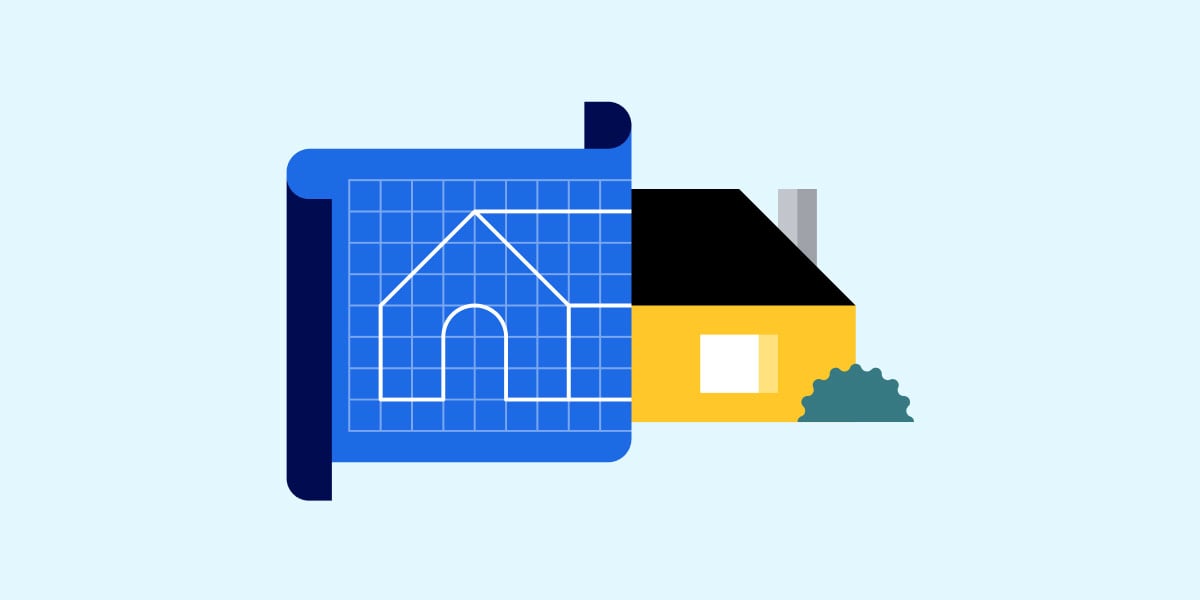Saving Money

Featured articles
-
![]()
Three ways to put your bonus to work
Cash windfalls can have the power to supercharge your savings goals.
Three ways to put your bonus to work Cash windfalls can have the power to supercharge your savings goals. Year-end bonuses are a blessing. And while there’s no guarantee you’ll get one—just ask Clark Griswold—if you do, they can have the power to supercharge your savings goals. So while you wait for that bonus cash, read up on three ways to handle small cash windfalls such as these. Go 50/50: Treat yourself now and save for the future Let’s address the elephant in the room: A lot of us spend the bulk of our bonuses. But there’s a psychological workaround to this temptation: Think of yourself as two people. There’s “present-day” you, flush with cash and eyeing a few items on your wish list. Then there’s “future” you and all of their dreams for major purchases or financial freedom. Since both of you can rightly lay claim to your bonus, the only fair thing to do is split it 50-50. So go ahead: Splurge guilt-free with one half of your bonus, and save the other half. Tax-savvy saving: Use your bonus to get a tax break A lot of companies withhold taxes on bonuses at the IRS-recommended rate of 22%. Less commonly, some companies lump it in with your regular paycheck, and your regular withholding rate applies. Either way, and contrary to popular belief, bonuses aren’t taxed at a higher rate. But seeing your bonus shrink due to any amount of taxes is still rough. Thankfully, you may able to minimize your tax hit with the help of a tax-advantaged retirement account: Boost your 401(k) contributions. In some cases, companies allow employees to make 401(k) contributions with their bonuses. If that’s the case for you, consider funneling “future” you’s half of your bonus into your traditional or Roth 401(k), up to the IRS limits. Traditional for a tax break now, Roth for a tax break later. Max out your IRA. Depending on how much income you make, you may be eligible to deduct traditional IRA contributions from your taxes and/or contribute after-tax dollars to a Roth IRA for a tax break later. Better yet, you have until Tax Day of 2024 to max out your 2023 IRA! Stash the cash: Start earning interest today Tax breaks aren’t the end-all, be-all, of course. In some scenarios, saving your bonus in a high-yield cash account like our Cash Reserve account might take priority. If you lack an emergency fund, for example, or if you’re planning for a major purchase in the near future. However you save or invest your bonus, rest easy knowing you’re striking a good balance between today and tomorrow. Unless your bonus came in the form of jelly, in which case you’re on your own, Clark. -
![]()
Three steps to size up your emergency fund
Strive for at least three months of expenses while taking these factors into consideration.
Three steps to size up your emergency fund Strive for at least three months of expenses while taking these factors into consideration. Imagine losing your job, totaling your car, or landing in the hospital. How quickly would your mind turn from the shock of the event itself to worrying about paying your bills? If you’re anything like the majority of Americans recently surveyed by Bankrate, finances would add insult to injury pretty fast: 57% | Percentage of U.S. adults currently unable to afford a $1,000 emergency expense In these scenarios, an emergency fund can not only help you avoid taking on high-interest debt or backtracking on other money goals, it can give you one less thing to worry about in trying times. So how much should you have saved, and where should you put it? Follow these three steps. 1. Tally up your monthly living expenses — or use our shortcut. Coming up with this number isn’t always easy. You may have dozens of regular expenses falling into one of a few big buckets: Food Housing Transportation Medical When you create an Emergency Fund goal at Betterment, we automatically estimate your monthly expenses based on two factors from your financial profile: Your self-reported household annual income Your zip code’s estimated cost of living You’re more than welcome to use your own dollar figure, but don’t let math get in the way of getting started. 2. Decide how many months make sense for you We recommend having at least three months’ worth of expenses in your emergency fund. A few scenarios that might warrant saving more include: You support others with your income Your job security is iffy You don’t have steady income You have a serious medical condition But it really comes down to how much will help you sleep soundly at night. According to Bankrate’s survey, nearly ⅔ of people say that total is six months or more. Whatever amount you land on, we’ll suggest a monthly recurring deposit to help you get there. We’ll also project a four-year balance based on your initial and scheduled deposits and your expected return and volatility. Why four years? We believe that’s a realistic timeframe to save at least three months of living expenses through recurring deposits. If you can get there quicker and move on to other money goals, even better! 3. Pick a place to keep your emergency fund We recommend keeping your emergency fund in one of two places: cash—more specifically a low-risk, high-yield cash account—or a bond-heavy investing account. A low-risk, high-yield cash account like our Cash Reserve may not always keep pace with inflation, but it comes with no investment risk. An investing account is better suited to keep up with inflation but is relatively riskier. Because of this volatility, we currently suggest adding a 30% buffer to your emergency fund’s target amount if you stick with the default stock/bond allocation. There also may be tax implications should you withdraw funds. Your decision will again come down to your comfort level with risk. If the thought of seeing your emergency fund’s value dip, even for a second, gives you heartburn, you might consider sticking with a cash account. Or you can always hedge and split your emergency fund between the two. There’s no wrong answer here! Remember to go with the (cash) flow There’s no final answer here either. Emergency funds naturally ebb and flow over the years. Your monthly expenses could go up or down. You might have to withdraw (and later replace) funds. Or you simply might realize you need a little more saved to feel secure. Revisit your numbers on occasion—say, once a year or anytime you get a raise or big new expense like a house or baby—and rest easy knowing you’re tackling one of the most important financial goals out there. -
![]()
Optimize your investing by optimizing your deposits
There’s an art to investing money. We can help you determine how much to save and the deposit ...
Optimize your investing by optimizing your deposits There’s an art to investing money. We can help you determine how much to save and the deposit strategies to help reach your goals. How much you need to invest and how you do it changes with your circumstances. With the right techniques and tools, you can be equipped to make the choices that are best for you, whatever your situation. Why it matters: If you simply invest money when you have “extra” or make deposits randomly when you remember to, you may be missing out on growing your investments or even reducing your taxes. When you open an investing or Cash Reserve goal, we’ll ask you what you’re saving for, your target amount, and the date you want to reach it by (your time horizon). Then we’ll recommend how much to save each month and give you resources to show projections since we can’t predict the future. There are two deposit strategies to choose from: Lump-sum investing is depositing the entire balance of cash at once. Dollar-cost averaging is depositing the same amount of money at fixed intervals (weekly, monthly, etc) over a period of time. Lump-sum investing may be better if you have extra cash and are looking to maximize the time your funds are invested which can result in higher long-term returns. But know that it can require strong discipline during volatile markets. You might see sizable unrealized short-term losses during market declines, making it hard to resist the urge to sell. Dollar-cost averaging may be better if you want to take less risk with a lump sum of cash and protect against short-term market declines, or if you only have money to save after each paycheck. But know that you may be forfeiting potential long-term upside by not investing a larger amount right away. On the positive side, this method helps you avoid timing the market and can be easily coordinated with the timing of your paycheck. You end up buying more shares of an investment when the price is low and fewer shares when the price is high which can result in paying a lower average price per share over time. Pro Tip: The easiest way to start dollar-cost averaging is by automating your deposits. To get started with dollar-cost averaging, simply log in to your Betterment account, click the Deposit button, select an account, and adjust the frequency to meet your needs. If you’re dollar-cost averaging, consider this: The timing of your deposits matters. Scheduling deposits to occur the day after each paycheck can be an effective strategy. There are three reasons for this: Paying yourself first. From a behavioral standpoint, this protects you from yourself. Your paycheck goes toward your financial goals first, and then toward other spending needs. Avoiding idle cash. When your cash sits in a traditional bank account, it typically earns very little interest. In times of inflation, your cash is actually losing value. Idle cash could cause you to miss out on investment growth. Reducing your taxes. Regular deposits can help us rebalance your portfolio more tax-efficiently, keeping you at the appropriate risk level without realizing unnecessary capital gains taxes. We use the incoming cash to buy investments in asset classes where you’re underweight, instead of selling investments in asset classes where you’re overweight.
Considering a major transfer? Get one-on-one help with one of our experts. Explore our licensed concierge
All Saving Money articles
-
![]()
Your year-end investing checklist
Your year-end investing checklist Dec 1, 2023 12:22:40 PM As the year comes to a close, it's a good time to check in on your investing plan and set yourself up for the year ahead. Checklists make life easier. But if they get too long, they become overwhelming. That’s why our year-end checklist only has five items on it. How to use this checklist: Take five minutes to review the checklist. For each relevant item, schedule an hour of time to sit down and start completing the task. Your future self will thank you. Here's your 5-point checklist: Max out retirement account contributions: Various retirement accounts like 401(k)s and IRAs have different maximum contributions with different benefits. If you have a traditional 401(k), every dollar you invest lowers your taxable income. Keep in mind the deadline to contribute is December 31. For IRAs on the other hand, you have until tax day, allowing you more time to invest. And in a Roth IRA, these dollars grow tax-free once invested. Plan next year's retirement account contributions: Examine your current 401(k) or IRA contributions. Experts typically recommend saving 10% to 15% of your income for retirement. This can be difficult, so we recommend saving as much as you can and automating it ahead of time using scheduled deposits or contributions. At the very least, if your employer offers a 401(k) match, see if you’re able to contribute enough to get what is essentially free money. Consider a rollover: If you have retirement accounts at other providers, review your fees and investment options. If you find higher-than-average fees or limited investment choices, consider if a rollover is right for you. Additionally, rolling over other retirement accounts into a Betterment IRA can streamline your finances by consolidating investments on one platform. Double-check your beneficiaries: Beneficiaries are the people who receive your money if something happens to you. It’s important they stay updated on each account, especially given that beneficiary designations normally take precedence over what’s listed in a will. We recommend reviewing beneficiaries annually or as life changes. Review your goals for next year and beyond: A new car, a vacation, a home renovation, child care—the list goes on. Taking just a small amount of time can set you up to save the money needed to reach your goals (and needs). For short-term goals, we recommend a high-yield cash account to keep your money safe as it grows. For long-term goals, we recommend a diversified portfolio of stocks and bonds. Or both! It’s a new year and a chance to put your financial plans first. Remember: Tackling just one item from the checklist above can make a big difference in your financial life. You got this! -
![]()
Compound interest: The 8th wonder of the world
Compound interest: The 8th wonder of the world Dec 1, 2023 11:30:31 AM We show you the power of compound interest and how to visualize projected compound interest on your Betterment accounts. In this article, we show you the power of compound interest and teach you how to use our tools to see how your investing accounts may grow over time. The main idea: Compound interest is when your earnings from investments are reinvested, growing even more earnings or “compounding” over time. It’s one of the ways your savings grow. How it works: Don’t worry, we won’t get into the complicated math. Let’s look at a scenario instead. But first, we need to know that three things go into creating value with compound interest: Rate of return on your investment or savings. Usually listed as a historical annualized return for stock investing or an annual percentage yield (APY) for savings and cash accounts. Frequency of compounding. For stock investing, this means how often you earn dividends and for a savings or cash account, this means how often you are paid interest. Time period for which your money is invested. The longer this is, the more time your money has to compound. Now let's look at a hypothetical scenario. Pretend two people each have $5,000 of savings. Over a five-year period, from August 2018 to July 2023, they each manage their money differently. Person 1: Keeps the $5,000 in a checking account that earns 0% interest. They still have $5,000 in July 2023 because there was no chance for their money to experience compound interest. Person 2: Invested $5,000 into an investing portfolio on August 1, 2018. With dividends reinvested, they averaged 7.4% annualized returns after fees, and on July 31, 2023, their account was worth $7,145. Compounding works the same way in savings or cash accounts that pay interest. For example, our Cash Reserve account allows you to earn a variable rate APY to compound your savings. You generally pay taxes on earnings in both investing and cash accounts, but even with taxes, your money has the potential to grow over the long term due to compound interest. Visualize compound interest on your Betterment investing account: Our mobile app and desktop platform both offer simple tools to help you see how compounding could impact your goals. Mobile app: Navigate to your investing account and view the Projection graph to see a visualization of how your account may compound over time. Desktop platform: To use the goal forecaster, navigate to your investing goal. Select the “Plan” section, then click the “Open goal forecaster” button. Our goal forecaster tool allows you to enter scenarios for deposit and target date inputs. The projection graph will show you the estimated impact of compound interest on your investment portfolio along with the chance of reaching your goal based on your inputs. -
![]()
Three ways to get the most out of your Cash Reserve account
Three ways to get the most out of your Cash Reserve account Sep 12, 2023 11:03:28 AM Let's take your cash game to the next level. Here are three tips to help manage your Cash Reserve account for long-term success. You're smart. You already have a Cash Reserve account (or you want one!). And you know the value of a high-yield account with FDIC insurance up to $2 million through our program banks†. Let's take your cash game to the next level. Why it matters: A Cash Reserve account is a place to grow your savings and secure your money during volatile times. But we also give you tools and tips to make the most of your cash, whether that’s saving for a goal or using cash to eventually invest in stocks and bonds. Here are three simple ways to level up your cash skills: #1 Have multiple goals and use the goal forecaster: You can have more than one Cash Reserve account to track your savings for different purchases or needs. To set up a new Cash Reserve account: Select “New cash goal” when you are opening a Cash Reserve account. You’ll be able to name your goal and set a target amount and target date to track your progress. To use the goal forecaster: On a desktop device, navigate to your cash goal account and click the “Open goal forecaster” button. You can enter different scenarios for a recurring deposit, a one-time deposit, and a target date. Our projection graph will show you the estimated chance of reaching your goal for each scenario you enter. #2 Pay yourself first with a consistent recurring deposit from your external account: The easiest way to pay yourself first is to automate it, saving you time while increasing your savings. Why use a recurring deposit to save? Think of the amount you save monthly just like a mandatory expense, no different than a phone bill or a mortgage payment. Each month, you can automatically send money from your external checking or savings account to your Cash Reserve account getting you one step closer to reaching your goal. How do you do it? In your Betterment account, click the Deposit button, select your “to” and “from” accounts, and adjust the frequency to meet your needs. #3 Balance short-term liquidity and long-term growth: Your Cash Reserve account is liquid, meaning it’s easy to access your cash. But it’s important to strike the right balance between cash for short-term needs and investments for long-term growth. Do you have an emergency fund? If you have already saved three to six months of living expenses then you should take a look at your extra cash. If you don’t have other short-term savings goals, investing in stocks and bonds may help to grow your money over time. Are your goals short-term or long-term? A Cash Reserve account may help you achieve short-term goals since you need the money soon and don’t want to lose it if stocks fall. But for goals longer than 12 months, consider stock and bond investing. While investing involves more risk, historically, stocks have had greater long-term gains than cash. Similar to a Cash Reserve goal, you can select an investing goal and we’ll recommend a portfolio to match your target date. -
![]()
Understand your net worth with our interactive tool
Understand your net worth with our interactive tool Jul 17, 2023 4:57:01 PM Using our Connected Accounts feature, you can see your total net worth on the Betterment app. We make it simple to view your net worth. That’s your investments, cash, and debts, all on one easy-to-read screen. Why it matters: Net worth is a good indicator of your financial stability because it shows what you have left over after you pay all your debt. See your net worth: Here’s how you can see your total net worth on the Betterment desktop and mobile app. Once you’re logged in, you’ll see the Net worth section. To view your net worth, if you’re on mobile, tap the section or if you’re on desktop, click See breakdown. On the Net worth screen, you’ll see the total value of your internal Betterment accounts and your external accounts. To add external accounts, click Manage connected accounts and follow the prompts. You’ll need to do this for all external accounts to see your total net worth. Now that you know how to set up and view your net worth, what does it all mean? According to the FDIC, net worth is a better measure of financial stability than income for two reasons. Your income could be decreased due to a job loss or reduction in work hours. Your income doesn’t indicate how much debt you have or how much savings or additional assets you have. Take this example: To illustrate what net worth means, consider two people who both make $100,000 per year. Person 1 has $450,000 in cash/investments and $420,000 in debt (net worth: $30,000) Person 2 has $225,000 in cash/investments and $10,000 in debt (net worth: $215,000) All else equal, Person 2 has a higher net worth and is in a better position to create long-term wealth. The big picture: Looking at your finances beyond your income can help you plan for the future. By looking at how much debt you have in addition to savings, you can create a clearer plan for long-term wealth creation. To increase your net worth, you can either reduce liabilities (debt like loans and credit card debt) or increase assets (accounts like cash savings and investments). You have two levers to pull. At Betterment, we give you the tools to increase your net worth. You can set up goals with automated deposits using a high-yield cash account or investment account. Plus, we’ll help you estimate how much you need to save with our goal forecaster tool. -
![]()
How I Money: Parents as Roomies and No Regrets
How I Money: Parents as Roomies and No Regrets Feb 17, 2023 1:59:15 PM How one college graduate from the first “Class of Covid” is using living at home to get a leg up on her financial goals. Disclaimer: Surabhi is not a client. She was offered a complimentary call with a licensed Betterment advisor (value of $299) and has a personal relationship with an employee of the firm. Because of this, she has an incentive to recommend Betterment which is a conflict of interest. Views may not be representative, see more reviews at the App Store and Google Play Store. Surabhi didn’t plan on living with her parents after graduating college in 2020, but a global pandemic has a curious way of changing the calculus on life decisions such as these. Faced with a fully-remote work environment as a software engineer, with no commute and no co-workers to mingle with during lockdown, she figured why not? Spending all that solitude — and more importantly, all that money — living in an apartment in downtown Kansas City didn’t seem to make much sense at the time. “Everyone was just at home making TikToks,” she jokes. So after receiving her diploma (in the mail due to commencement being canceled), she moved back into the house where she grew up, 20 minutes south of downtown KC. It’s where we spoke one icy winter day, warming up over a cup of tea made by her mom. Surabhi’s family — mom, dad and younger sister — are close, and that certainly helps on the cohabitation front. They have ample space to spread out, a privilege she’s well-aware of. “A lot of stars had to line up for that [decision to move in] to happen, and I feel grateful for that situation,” she says as we speak in her living room. Pieces of art painted by her younger sister sit on the fireplace mantel. Before Surabhi left for college, the 7-year age gap between them made it hard to relate. But now the gap doesn’t feel so big. They’re spending time together and getting to know each other as peers. It’s one silver lining stemming from the curveball that Covid threw her. That, and a fortuitous head start on her saving goals. “I want to be so financially set that I could live wherever I wanted.” Surabhi’s living situation has become anything but rare. It became the norm, statistically-speaking, during the first summer of the pandemic. That marked the first time a majority of young adults (52%) lived with their parents, a rate not even seen during the Great Depression. Some do so out of financial necessity, in which case, it presents a good opportunity to pursue early financial goals like an emergency fund. For others with more means, it can supercharge their savings for longer-term goals such as a home down payment or retirement. Either way, moving back in with your folks presents a unique opportunity to save on what amounts to the biggest expense for many people: housing. Plenty of variables factor into the cost of housing, but three biggies stand out: How to lower your housing costs Rent vs. own | Renting is, both generally-speaking and in the short-to-mid-term, cheaper than the total cost of owning a home, but what you do with those savings is key. If invested, they have the potential to grow, not unlike the equity you would build over the course of owning a home long-term. Roommates | Going halfsies, thirdsies, or more on rent or a mortgage can reduce your housing costs significantly. Geography | The city you live in has a lot to say about how much housing eats into your budget. Among the 75 biggest metro areas, for example, rent in San Francisco is 560% more expensive than in McAllen, Texas, according to move.org. Proximity to a city’s core also matters, although the trend of remote working is fueling increases in the value of suburban homes that have historically been more affordable. The topic of geography was top-of-mind for Surabhi in the months following graduation, especially as she watched some friends and fellow classmates move to bigger cities. And while she’s open to relocating in the near future, she sees her current setting as ideal for two reasons: It’s given her the time to reflect on what she wants out of her next move, and it’s given her the savings to start laying a foundation for more financial freedom in the future. “I want to be so financially set that I could live wherever I wanted to and not worry about the day-to-day expenses as much,” she says. To that end, Surabhi invests through a 401(k) and Roth IRA, maxing out both. She had the good fortune of being introduced to investing by a mentor in college, long before she had earned her first paycheck as a professional. “He taught me about the market, its ups and downs, and all the intricacies,” she says. “It’s important to find somebody like that in your life, an unbiased third party who’s educated in these spaces.” Not everyone has a person like that in their social circle, she points out. Emphasizing financial literacy more in school could help others, but for many investors, help comes in the form of a professional financial advisor. We connected Surabhi with one of our own advisors as a thank you for her interview. Someone to talk about all the financial topics on her mind. And while it may seem from the outside looking in that she’s well on her way to reaching her financial goals, she knows there will be more curveballs along the way. Perhaps starting with that first rent check or mortgage payment when she eventually moves out. “I will say, that’s going to be kind of a slap in the face,” she says with a slight smile on her face. -
![]()
Personal Finance Stories From Our AAPI Community
Personal Finance Stories From Our AAPI Community Oct 20, 2022 12:00:00 AM Members of the Asians of Betterment ERSG share financial advice learned from their parents and the immigrant experience, and how their financial perspectives have shifted over time. Advice is a powerful way of connecting families across generations. In honor of Asian American and Pacific Islander Heritage Month, we asked members of our Asians of Betterment community to share personal finance advice from their parents. Financial advice is rooted in our experiences While our families grew up at different times and in different countries, many still have a shared experience of moving to the United States that left an impact on their advice for how to grow their wealth through saving. Anwesha Banerjee, Senior Counsel: My parents taught me about getting a bank account and a (starter) credit card early and paying it in full each month, to start building good financial habits and credit. Also, they emphasized strong and quick mental math—you can't get cheated if you know your numbers! John Kim, Mobile Engineer: My parents were responsible spenders and liked to save. They taught me not to make purchases off of impulse and I learned how to live within my means happily. Jeff Park, Software Engineer: My family's perception of money has always been heavily influenced by historical events that affected my family over generations. My father's family, for example, were scholars in the nobility class, and for all intents and purposes, they were pretty well-off. My grandfather was a university professor in the early 1920s, but due to his vocal criticism of the Japanese occupation, he and his family were forced to leave their wealth behind as they ran away to China to avoid criminal prosecution. My mother's family also saw their wealth significantly decline due to the Korean War. As both my parents looked abroad for sustainable opportunities, they brought with them an understandable fear that events outside of their control can significantly affect their well-being. Prudence and savings were often preached in my family, and we were always told that it is often better to forego immediate petty pleasures for the peace of mind of a prepared tomorrow. "Save where you can, spend when you need to." -Thi Nguyen Taking care of our families always comes first Family is a recurring theme in the way that our community thinks about finances. Our parents instilled a strong sense of frugality and saving, but taking care of family financially, both at home and abroad, always comes first. Erica Li, Software Engineer: My family taught me to recognize and prioritize your financial goals. Work towards reaching them even if it means sacrificing from other areas. My dad made $30 a month in China before getting the opportunity to immigrate to the United States. His biggest goal, in addition to learning English and acclimating to an entirely new culture, was to save enough money to bring my mother and I over as well. Once my mother and I settled in the United States, new goals and expenses appeared: buying a house in a good public school district and starting a college fund for me. Saving for these goals wasn't such a smooth journey. My mother had to transition from a stay-at-home role to working alongside my dad as our financial circumstances fluctuated. They took up multiple jobs and sacrificed retirement savings to put money towards these goals. We eventually bought a house in New Jersey, and I was lucky to have had financial support from my parents during my college years. Our financial perspectives shifted over time, too Part of the beauty of the advice passed from generation to generation is how it evolves and adapts over time. Times change, environments change, knowledge changes and our perspectives shift with that. Our community members, many of whom grew up in a different country than their parents, shared how their personal outlook on finances evolved from that of their families. John Kim, Mobile Engineer: I definitely took after my parents’ saving habits and learned to expand that mentality through investing. Nima Khavari, Account Executive: Moving to the United States and watching my parents adapt to a consumer driven economy based on access to credit was a significant observation. Remembering them trying to understand credit scores and how to improve it in order to purchase a home left a lasting impression. Erica Li, Software Engineer: Now that I'm all grown up, my parents are no longer putting away money towards goals for my benefit. Alongside catch-up retirement contributions, it makes me happy to see that my parents are finally using their money for pleasure. They recently bought themselves a new car after having their old one for 20 years. Also happy to say that they finally replaced their stove with one that has a working oven! Anonymous: My family made every financial mistake in the book. I can't blame them since they immigrated to this country without knowing English and without a formal financial education. They fell for every scam, pyramid scheme, loan shark, didn't know how credit worked, and lost everything. However, it was an opportunity to learn from their mistakes. After seeing what my parents went through, I learned how credit and financing worked magic, financial planning, and how to recognize cons. I wouldn't be as financially apt if it weren't for their experiences—a huge motivation for why I'm studying for the CFP® exam. The plan is to go back to immigrant communities and warn others from making the same mistakes. -
![]()
Buying A Home: Down Payments, Mortgages, And Saving For Your Future
Buying A Home: Down Payments, Mortgages, And Saving For Your Future Oct 17, 2022 12:00:00 AM Your home may be the largest single purchase you make during your lifetime. That can make it both incredibly exciting and nerve wracking. Purchasing a primary residence often falls in the gray area between a pure investment (meant to increase one’s capital) and a consumer good (meant to increase one’s satisfaction). Your home has aspects of both, and we recognize that you may purchase a home for reasons that are not strictly monetary, such as being in a particular school district or proximity to one’s family. Those are perfectly valid inputs to your purchasing decision. However, this guide will focus primarily on the financial aspects of your potential home purchase: We’ll do this by walking through the five tasks that should be done before you purchase your home: Build your emergency fund Choose a fixed-rate mortgage Save for a down payment and closing costs Think long-term Calculate your monthly affordability Build your emergency fund Houses are built on top of foundations to help keep them stable. Just like houses, your finances also need a stable foundation. Part of that includes your emergency fund. We recommend that, before purchasing a home, you should have a fully-funded emergency fund. Your emergency fund should be a minimum of three months’ worth of expenses. How big your emergency fund should be is a common question. By definition, emergencies are difficult to plan for. We don’t know when they will occur or how much they will cost. But we do know that life doesn’t always go smoothly, and thus that we should plan ahead for unexpected emergencies. Emergency funds are important for everyone, but especially so if you are a homeowner. When you are a renter, your landlord is likely responsible for the majority of repairs and maintenance of your building. As a homeowner, that responsibility now falls on your shoulders. Yes, owning a home can be a good investment, but it can also be an expensive endeavor. That is exactly why you should not purchase a home before having a fully-funded emergency fund. And don’t forget that your monthly expenses may increase once you purchase your new home. To determine the appropriate size for your emergency fund, we recommend using what your monthly expenses will be after you own your new home, not just what they are today. Choose a fixed-rate mortgage If you’re financing a home purchase by way of a mortgage, you have to choose which type of mortgage is appropriate for you. One of the key factors is deciding between an adjustable-rate mortgage (ARM) and a fixed-rate mortgage (FRM). Betterment generally recommends choosing a fixed-rate mortgage, because while ARMs usually—but not always—offer a lower initial interest rate than FRMs, this lower rate comes with additional risk. With an ARM, your monthly payment can increase over time, and it’s difficult to predict what those payments will be. This may make it tough to stick to a budget and plan for your other financial goals. Fixed-rate mortgages, on the other hand, lock in the interest rate for the lifetime of the loan. This stability makes budgeting and planning for your financial future much easier. Locking in an interest rate for the duration of your mortgage helps you budget and minimizes risk. Most home buyers do choose a fixed-rate mortgage. According to 2021 survey data by the National Association of Realtors®, 92% of home buyers who financed their home purchase used a fixed-rate mortgage, and this was very consistent across all age groups. Research by the Urban Institute also shows FRMs have accounted for the vast majority of mortgages over the past 2 decades. Save for a down payment and closing costs You’ll need more than just your emergency fund to purchase your dream home. You’ll also need a down payment and money for closing costs. Betterment recommends making a down payment of at least 20%, and setting aside about 2% of the home purchase for closing costs. It’s true that you’re often allowed to purchase a home with down payments far below 20%. For example: FHA loans allow down payments as small as 3.5%. Fannie Mae allows mortgages with down payments as small as 3%. VA loans allow you to purchase a home with no down payment. However, Betterment typically advises putting down at least 20% when purchasing your home. A down payment of 20% or more can help avoid Private Mortgage Insurance (PMI). Putting at least 20% down is also a good sign you are not overleveraging yourself with debt. Lastly, a down payment of at least 20% may help lower your interest rate. This is acknowledged by the CFPB and seems to be true when comparing interest rates of mortgages with Loan-to-Values (LTVs) below and above 80%, as shown below. Source: Federal Reserve Bank of St. Louis. Visualization of data by Betterment. Depending on your situation, it may even make sense to go above a 20% down payment. Just remember, you likely should not put every spare dollar you have into your home, as that could mean you don’t have enough liquid assets elsewhere for things such as your emergency fund and other financial goals like retirement. Closing Costs In addition to a down payment, buying a home also has significant transaction costs. These transaction costs are commonly referred to as “closing costs” or “settlement costs.” Closing costs depend on many factors, such as where you live and the price of the home. ClosingCorp, a company that specializes in closing costs and services, conducted a study that analyzed 2.9 million home purchases throughout 2020. They found that closing costs for buyers averaged 1.69% of the home’s purchase price, and ranged between states from a low of 0.71% of the home price (Missouri) up to a high of 5.90% of the home price (Delaware). The chart below shows more detail. Source: ClosingCorp, 2020 Closing Cost Trends. Visualization of data by Betterment. As a starting point, we recommend saving up about 2% of the home price (about the national average) for closing costs. But of course, if your state tends to be much higher or lower than that, you should plan accordingly. In total, that means that you should generally save at least 20% of the home price to go towards a down payment, and around 2% for estimated closing costs. With Betterment, you can open a Major Purchase goal and save for your downpayment and closing costs using either a cash portfolio or investing portfolio, depending on your risk tolerance and when you think you’ll buy your home. Think long-term We mentioned the closing costs for buyers above, but remember: There are also closing costs when you sell your home. These closing costs mean it may take you a while to break even on your purchase, and that selling your home soon after is more likely to result in a financial loss. That’s why Betterment doesn’t recommend buying a home unless you plan to own that home for at least 4 years, and ideally longer. Unfortunately, closing costs for selling your home tend to be even higher than when you buy a home. Zillow, Bankrate, NerdWallet, The Balance and Opendoor all estimate them at around 8% to 10% of the home price. The below chart is built from 2020 survey data by the National Association of Realtors® and shows that most home sellers stay in their homes beyond this 4 year rule of thumb. Across all age groups, the median length of time was 10 years. That’s excellent. However, we can see that younger buyers, on average, come in well below the 10-year median, which indicates they are more at risk of not breaking even on their home purchases. Source: National Association of Realtors®, 2020 Home Buyers and Sellers Generational Trends. Visualization of data by Betterment. Some things you can do to help ensure you stay in your home long enough to at least break even include: If you’re buying a home in an area you don’t know very well, consider renting in the neighborhood first to make sure you actually enjoy living there. Think ahead and make sure the home makes sense for you four years from now, not just you today. Are you planning on having kids soon? Might your elderly parents move in with you? How stable is your job? All of these are good questions to consider. Don’t rush your home purchase. Take your time and think through this very large decision. The phrase “measure twice, cut once” is very applicable to home purchases. Calculate your monthly affordability The upfront costs are just one component of home affordability. The other is the ongoing monthly costs. Betterment recommends building a financial plan to determine how much home you can afford while still achieving your other financial goals. But if you don’t have a financial plan, we recommend not exceeding a debt-to-income (DTI) ratio of 36%. In other words, you take your monthly debt payments (including your housing costs), and divide them by your gross monthly income. Lenders often use this as one factor when it comes to approving you for a mortgage. Debt income ratios There are lots of rules in terms of what counts as income and what counts as debt. These rules are all outlined in parts of Fannie Mae’s Selling Guide and Freddie Mac’s Seller/Servicer Guide. While the above formula is just an estimate, it is helpful for planning purposes. In certain cases Fannie Mae and Freddie Mac will allow debt-to-income ratios as high as 45%-50%. But just because you can get approved for that, doesn’t mean it makes financial sense to do so. Keep in mind that the lender’s concern is your ability to repay the money they lent you. They are far less concerned with whether or not you can also afford to retire or send your kids to college. The debt to income ratio calculation also doesn’t factor in income taxes or home repairs, both of which can be significant. This is all to say that using DTI ratios to calculate home affordability may be an okay starting point, but they fail to capture many key inputs for calculating how much you personally can afford. We outline our preferred alternative below, but if you do choose to use a DTI ratio, we recommend using a maximum of 36%. That means all of your debts—including your housing payment—should not exceed 36% of your gross income. In our opinion, the best way to determine how much home you can afford is to build a financial plan. That way, you can identify your various financial goals, and calculate how much you need to be saving on a regular basis to achieve those goals. With the confidence that your other goals are on-track, any excess cash flow can be used towards monthly housing costs. Think of this as starting with your financial goals, and then backing into home affordability, instead of the other way around. Wrapping things up If owning a home is important to you, the five steps in this guide can help you make a wiser purchasing decision: Have an emergency fund of at least three months’ worth of expenses to help with unexpected maintenance and emergencies. Choose a fixed-rate mortgage to help keep your budget stable. Save for a minimum 20% down payment to avoid PMI, and plan for paying ~2% in closing costs. Don’t buy a home unless you plan to own it for at least 4 years. Otherwise, you are not likely to break even after you factor in the various costs of homeownership. Build a financial plan to determine your monthly affordability, but as a starting point, don’t exceed a debt-to-income ratio of 36%.
Looking for a specific topic?
- App
- Behavioral finance
- Buying Real Estate
- Career Planning
- Cash Reserve
- Charitable Giving
- Crypto investing
- DIY Investing
- Debt
- Diversification
- ESG Investing
- Education Savings
- Estate Planning
- Fiduciary Advice
- Filing Taxes
- Financial Advisors
- Financial Goals
- Health Savings
- Inheritances
- Insurance
- Investing
- Investing Philosophy
- Investing Risk
- Investing with Betterment
- Investment Accounts
- Investment Portfolios
- Market volatility
- Markets
- Performance
- Public statements
- Retirement Income
- Retirement Planning
- Robo-Advisors
- Rollovers
- Salaries and Benefits
- Saving Money
- Savings Accounts
- Security
- Shared Finances
- Tax Coordination
- Taxes
- Transfers
- Using IRAs
- bond investing
No results found









